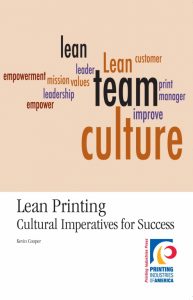MANAGING A CONSCIOUS CHANGE PROCESS is difficult and not natural for people and organizations. It’s much easier to continue doing things the way they have always been done and not expend any effort on trying to act differently. Change can cause confusion, create stress, disrupt established patterns of communication, and generally be perceived as a pain by those who have to enact it.
Your goal in managing a change process is to minimize the negative energy around the changes and to create positive feelings for people who are part of the overall change process. Peter Drucker wrote, “One cannot manage change. One can only be ahead of it.” His point is that change is going to happen, and the only managers who survive it are those who actively try to stay in front of it. The environment around you is not static; your culture cannot be either.
Allowing too much complacency

Effective change managers create a needed sense of urgency to drive the change process. All organizations are capable of effectively changing into something different and better. Key to the process is management leadership in creating – or defining for the organization – a compelling sense of urgency to be something different.
While people and organizations may seem naturally resistant to change, they are much more willing to partake in a change process if they understand specifically what the issues are and what the desired outcome looks like and feels like. Managers play the key role in defining the vision of what the organization needs to look and feel like in the future to be competitive.
In the print industry today, there is certainly an abundance of issues to provide a needed context for change efforts. Some of these are: macroeconomic trends, many of which are negative; demographic trends in the use of print; substitution of print by digital media; social-media needs transforming communication modes; increasing competition among print providers for customers; and growing development of Lean initiatives as a catalyst for competitive improvement.
Certainly in this list you can find several topics you can relate to in your business environment. The key to creating a sense of urgency, much like in communicating about your vision and mission, is in the abundance of communication you need to make on the topic. A state of urgency should also be contrasted with a state of fear. Fear can debilitate employees while your goal here is to inspire positive action. There can be a fine line in employees’ eyes between an issue inspiring urgency and action, or one that invites fear and inaction. Clearly, you want to avoid creating fear while you inspire change action through urgency.
Advertisement
Change in your culture will not come after making one great “Change is imperative” speech to the workforce. Your task does not end after identifying the need for change and stating it. You must lead the organization and lead – and live – the change process. References to the needed change must abound in your communications, and evidence of your commitment to the change must be clear, consistent, and visual to your employees. If you are working to increase the empowerment of your employees, then you need to define clearly what empowerment looks like and work to find examples that provide positive reinforcement of the movement toward empowerment. Change efforts cannot be passive. Organizational inertia to remain “as is” can be powerful, and you have to exert greater force on the culture to shape it into what you envision.
Many traditional print organizations operate on a “need to know” basis, where information is compartmentalized and only shared selectively. This is the antithesis of Lean management. Managers need to set the example of openly sharing information and work to break down existing barriers that inhibit the flow of information within the culture. Employees will watch and see how open management is with free-flowing communication on the topic of change and altering the culture.
Empowering employees
Some time ago, I managed a print facility which was moving down the pathway of empowering teams in the workplace. It’s difficult to impossible for teams to make decision about their jobs without an understanding of the financial impact of choices they consider. At the time, I was holding monthly financial recap meetings with each shift in the plant to review the monthly data accounting had generated on our performance. In these meetings, I’d explain the results of the last month and spend some time on any unique or unplanned results as well as speak to the trends the financial numbers were showing us about the business. Employees seemed interested and appreciated the degree to which I shared the financial performance of the plant with them, particularly in comparison to what exposure they had previously been given to financial performance within other jobs or companies.
While my effort at sharing financial information was well intended, it did little to truly empower the workforce with a better understanding of how “the numbers” worked and how they as individuals could relate to them. It also was placing the full ownership of the financial results fully on me, as I was the one explaining them each month. As plant manager, I was fully responsible for the financial results. However, in taking this approach, little had been done to empower anyone other than myself regarding plant financial performance.
Upon reflecting about what direction the plant needed to go regarding empowerment, I chose to more fully involve plant employees in the monthly financial reporting process. Doing this involved identifying team leaders in each major area of the plant. I asked them if they wanted to be more involved and understand more about our financial results, and I received unanimous positive feedback.
We then went through a process of spending a few months mutually reviewing the results for their area of the plant. Helping them learn how the various financial statements interacted with each was important, so questions that arose could be traced back to general ledger entries, which either provided the needed answers or allowed the right question to be asked within our accounting group. It did not take long for employees to gain some comfort level with the month-end process and develop a desire to provide their own analysis to run by me.
Advertisement
The next step was when each individual presented their area’s results at our plant financial recap meeting. It was immediately clear that this was a powerful process to have initiated. Employees were much more interested about hearing results from the people they worked directly with and were able to relate to the trends in ways I had never imagined possible. Teams began tracking key events during the month and then looking for their impact when the monthly accounting came out. As more employees understood how the monthly financial results came from the culmination of all the actions taken within the plant, unique employee-driven improvement projects began to spring up. Employees traveled over to the accounting offices to get to know cost accountants and better understand the process of how we keep track of the business.
A work-in-progress
What took place was an amazing transformation of knowledge within the plant as greater numbers of employees understood the financial results and recognized how they could have an impact on them through their own actions. Importantly, it was an empowering experience that employees gravitated to in a positive manner. People wanted to know how their jobs and actions made a difference, and the culture was changing in a positive manner through this.
It took time. It took effort to train employees in a discipline most were not familiar with. It took trust that information would not be misused. It also took being willing to give up a level of control that management had always had over the workforce – the unique understanding of financial performance and how it was impacting the business decisions.
Complacency cannot be allowed to inhibit employee or management actions in changing the culture for the future. My efforts to engage the organization through a better understanding of plant financial results was an ongoing work-in-progress. The initial efforts were nice but insufficient to create the changes needed. Managers must hold themselves accountable to the change process – as well as employees – and take any needed steps to facilitate change and not be complacent with the way things have always been.

 VEHICLE WRAPS + GRAPHICS3 weeks ago
VEHICLE WRAPS + GRAPHICS3 weeks ago
 Press Releases3 weeks ago
Press Releases3 weeks ago
 Case Studies3 weeks ago
Case Studies3 weeks ago
 Case Studies1 week ago
Case Studies1 week ago
 Benchmarks3 weeks ago
Benchmarks3 weeks ago
 Press Releases2 months ago
Press Releases2 months ago
 Press Releases3 weeks ago
Press Releases3 weeks ago
 Press Releases2 months ago
Press Releases2 months ago



















